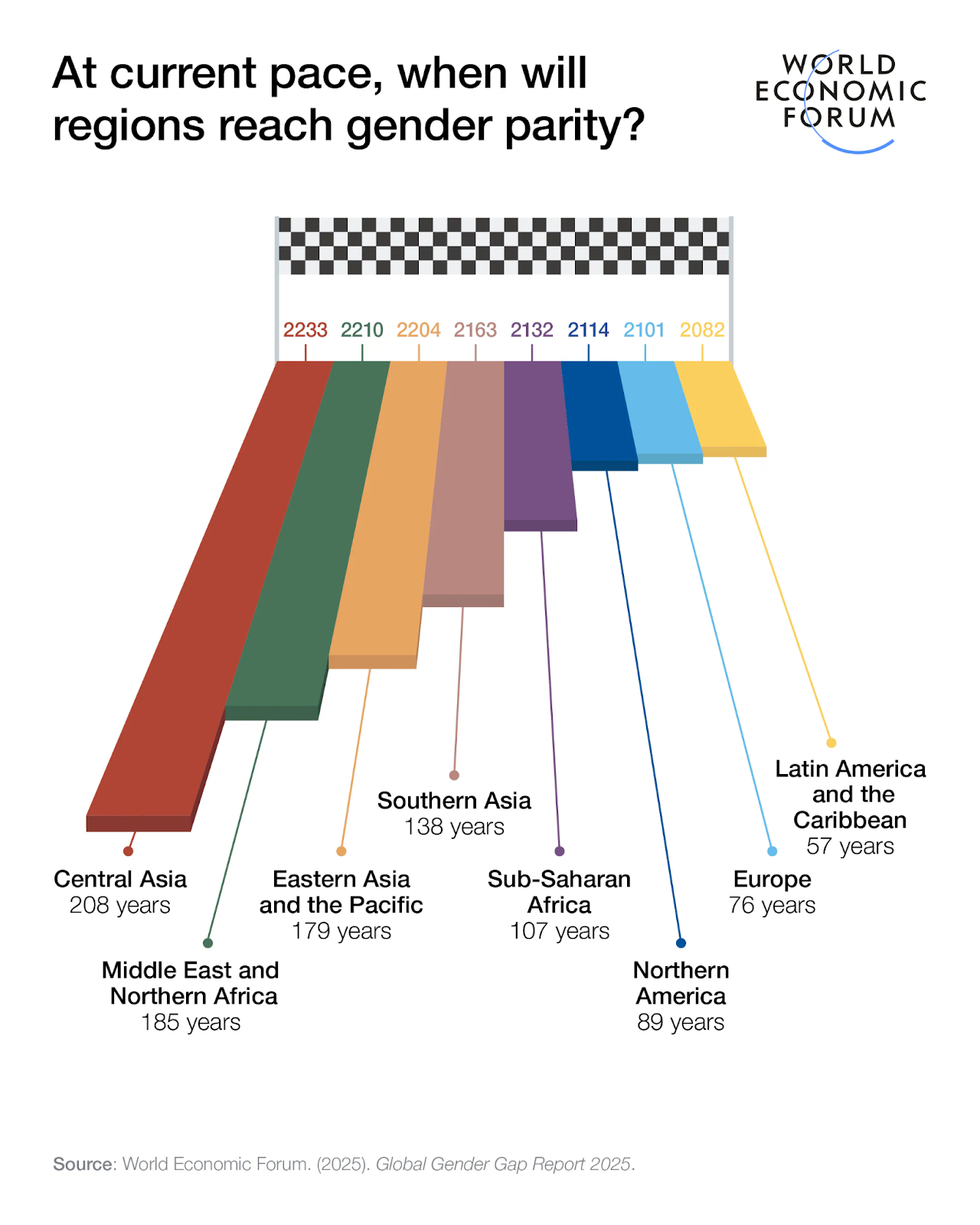Font size:
Print
Global Gender Gap Report 2025
India marks a relative decline in gender parity, ranks 131 worldwide
Context: India has slipped two ranks to 131 out of 148 countries in the World Economic Forum’s Global Gender Gap Report 2025, with an overall gender parity score of just 64.1%.

More on News
- This places India among the lowest-ranked nations in South Asia, raising concerns over the country’s slow progress in achieving gender equality.
- The Global Gender Gap Index evaluates countries across four key dimensions — economic participation and opportunity, educational attainment, health and survival, and political empowerment.
- Despite a marginal improvement in India’s absolute performance by 0.3 points, structural inequalities continue to hinder women’s progress in the country.
India’s Performance Across Key Gender Equality Indicators
- Economic Participation and Opportunity: Slight Progress
-
-
- India saw a modest rise in economic parity, with the subindex improving by 0.9 percentage points, bringing the score to 40.7%.
- Notably, estimated earned income parity increased from 28.6% to 29.9%.
- However, the labour force participation rate for women remained stagnant at 45.9%, underlining persistent barriers to women’s workforce inclusion.
-
-
Educational Attainment: Near Gender Parity Achieved
-
-
- India showed significant improvement in educational parity, achieving a score of 97.1%.
- The report attributes this to rising female literacy rates and greater female enrolment in tertiary (higher) education, marking a strong step towards long-term gender equality.
-
-
Health and Survival: Positive Gains
-
-
- On the health front, India registered improved parity in sex ratio at birth and healthy life expectancy, helping boost its score in this dimension.
- However, the report noted that overall life expectancy declined for both men and women globally — parity was achieved, but under less favourable conditions.
-
-
Political Empowerment: Continued Decline
-
- A concerning drop was observed in India’s political empowerment score for the second consecutive year.
- Female representation in Parliament declined from 14.7% to 13.8%, reinforcing the gender imbalance in political decision-making roles.
- This significantly impacted India’s overall gender gap ranking.
Global and Regional Highlights
- Globally, the gender gap has narrowed to 68.8%, the highest annual improvement since the COVID-19 pandemic.
- However, at the current rate, the world is still 123 years away from achieving full gender parity.
- For the 16th year in a row, Iceland tops the index as the most gender-equal country, followed by Finland, Norway, the United Kingdom, and New Zealand.
- In South Asia, Bangladesh emerged as a standout performer, surging 75 places to rank 24th globally, thanks to robust gains in political empowerment and economic participation. Other regional rankings include: Nepal: 125, Sri Lanka: 130, Bhutan: 119, Maldives: 138 and Pakistan: 148 (lowest globally).
Way Ahead
- While India has made progress in education and health, the persistent gaps in workforce participation and political representation highlight the need for policy interventions and social reform.
- Bridging the gender gap will require not just economic empowerment, but also inclusive governance and targeted initiatives to dismantle systemic barriers faced by women.


